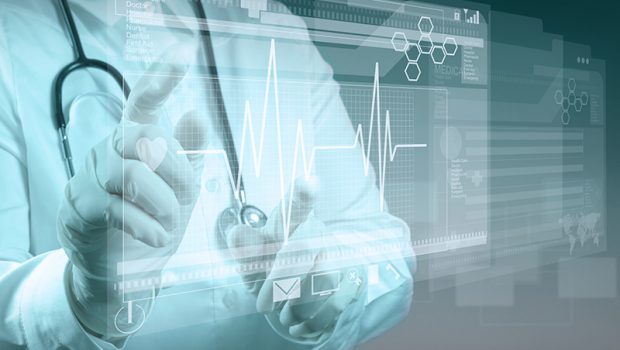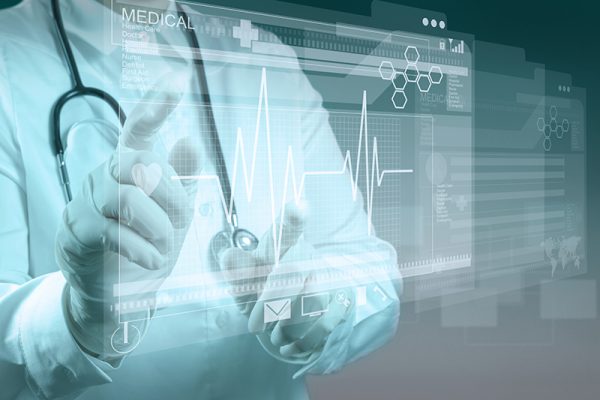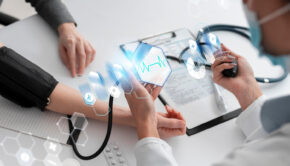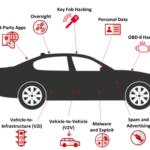Top 8 Tech Innovations That Will Shape Healthcare in 2020
2020 is shaping up to be one of the biggest years for healthcare technology ever. We have chosen 8 most progressive digital trends that play an important role. One of the biggest changes we will see in Real-time diagnostics. Also, Genomics, Artificial pancreas, and Tele-health are just few of the unbelievable developments and innovations that will shape our future.
Healthcare is a continuously changing environment. As new technologies and proficiencies enhance the abilities for researchers and doctors, patients profit with new treatments, medicines and monitors.
Here, a glimpse of what you can expect to see in new technology in the healthcare field in 2020.
1. Smart Bluetooth-enabled inhalers
For asthma patients, inhaled corticosteroids and bronchodilators are the keystone treatments. Corticosteroids support to control inflammation while the bronchodilators give quick relief when symptoms flare.
Inhalers are effective when they are used properly, however up to 95 percent of people who use them do not do so in the appropriate manner.
Bluetooth-enabled devices are designed to identify inhaler use, remind patients to use their pill, boost correct use of the device, and collect data about a patient’s inhaler use that can aid guide care.
Every time the inhaler is used, it keeps the time, date, place, and whether the dose was appropriately administered. This will offer a valuable vision to decide how adherent patients are to their controller medicines, as well as help us know the episodes of when a patient experiences a flare-up. Additional devices, which pin to current inhalers and send data to a smartphone app, are obtainable now.
With regards to Propeller’s add-on smart inhaler device, in a clinical trial, researchers discovered that participants used less reliever medicine, had more reliever-free days, and better complete asthma control over the 12 months of the study.
2. Telehealth
The telehealth market is growing. Consumers are leading gradually busy lifestyles, with up to 65% choosing digitally-led facilities. Delivering clinical care at a distance, increasing availability and eliminating potential delays has given patients larger control, encouraging patient satisfaction and complete engagement. Experts predict the telehealth market will grow by 15.3 percent by 2020.
Entire telehealth market value by 2020, is expected to hit $36.2 billion. In 2013, the market value was $14.3 billion. Telehealth video consultations will rise from 19.7 million in 2014 to 158.4 million per year by 2020, as per the report from Tractica.
3. Artificial pancreas
Every year, medical technology companies are functioning to make diabetes more hands-off, end the endless cycle of examining and monitoring, and rationalize the glucose-delivery process. They are nearer than ever with artificial pancreases, which is called as automated insulin delivery systems.
Automated insulin delivery systems are worn like traditional insulin pumps, are designed to systematize blood-sugar control by watching glucose levels continuously and giving insulin that can control blood sugar levels as they are needed.
All of this is achieved by a computer model or an algorithm that joins the patient’s insulin pump, the artificial pancreas into a smartphone. It can spot what your glucose level is, and it has an insulin delivery device that can provide subcutaneous insulin suddenly. That smart technology, it can alter and differ as required, instead of giving you that one fixed dose continuously. In 2016, this kind of “closed-loop” system was permitted by the U.S. Food and Drug Administration (FDA). It has been accessible for more than a year, however, newer versions are expected in the coming months and years. Hopefully, the newer versions are predicted to provide greater ease of use and satisfaction.
However, patients still required to be aware of what their blood sugars are and what the system is performing.
4. Blockchain
Blockchain is assessed to reach over $5.61bn by the end of 2025, while it remains reliant on the ability to record and store information appropriately, economically and safely among various systems and applications. Delivering transparency and eradicating third-party intermediaries, methods are rationalized, decreasing healthcare prices exponentially. By solving the capability for providers to supply a value-based healthcare system and improve patient engagement, blockchain can save the industry up to $100-$150bn per year by 2025 in operations costs, IT costs, data breach-related costs, personnel costs and support function costs as per BIS Research. Associating with pharmaceutical company, GlaxoSmithKline (GSK), Ethereumblockchain-based supply chain platform, Viant sought to quicken the speed of blockchain-based supply chain systems. Supply chain giant DHL and Accenture have also industrialized a blockchain-based series prototype which keeps a record of pharmaceuticals from the point of beginning to the consumer.
5. Precision medicines for rheumatoid arthritis
Rheumatoid arthritis (RA) is a common autoimmune disease. It damages the cartilage in joints, can cause joint destruction, and ultimately leading to disability. Serious cases of RA can destroy internal organs and cause vascular inflammation. This can lead to premature death.
In 2016, Yale researchers recognized a genetic mechanism that may raise an individual’s risk for rheumatoid arthritis. In their study, they wrote that the use of precision medicine could aid target that gene and inhibit it. RA researchers have been studying gene mutations or a variant which leads to this disease in a few people. Precision medication for RA is designed to attack susceptible genes or areas of the cell. This might deteriorate the disease, recover symptoms, and perhaps aid decrease joint damage. Advances in precision medicine in all areas, not just RA, doctors and researchers are discovering ways to create novel therapies and methods that are designed around individual people, not diseases. No two RA patients’ or bodies would be the same. Even with having the same diagnosis of RA and likely the same kind of symptoms, every patient is however bio-individually unique.
6. Genomics
As consumers get more involved in the control of their health, consumer research and genetics companies have developed in scale and popularity. Pharmaceutical companies are looking to develop treatments by analysing human genetics and also to even remove hereditary genes which pass diseases down generations. In 2017, human embryos were effectively ‘edited’ via gene editing tool, that is CRISPR (Clustered, Regularly Interspaced, Short Palindromic Repeats), eliminating hypertrophic cardiomyopathy within 42 embryos. Researchers have proved that treatment using gene therapy provides quicker recovery after nerve damage. When surgical repair procedure and gene therapy were combined, the survival of nerve cells and the regeneration of nerve fibres over a long distance was stimulated. The discovery is a significant step to the development of a new treatment for people who have nerve damage.
7. Precision medicines for cancer treatment
More than 1.8 million people were diagnosed with cancer in 2018, more than 1.6 million people will be diagnosed with cancer. One that kind of tool is precision medicine. Precision medicine is a method to cancer treatment which lets doctors choose medicines depending upon individual cancer’s genetic makeup.
This means doctor just would not treat lung cancer, however, they will treat the type of lung cancer the patient has, down to the particular abnormal proteins and genes.
As advanced as precisions medicines are, they are not cures. However, scientists and doctors have great hope that one day being able to modify treatment to each cancer’s genetic changes and traits.
8. Real-time diagnostics
ZoltanTakats of Imperial College London invented the intelligent surgical knife (iKnife) that works by using an old technology in which an electrical current heats tissue to make incisions with very less blood loss. With the iKnife, the vaporized smoke is studied by a mass spectrometer to identify the chemicals in the biological sample. This means it can detect whether the tissue is malignant real-time. Surgeons will actually like this surgical Jedi knife which can considerably decrease the length of surgeries.
Conclusion
These eight emerging trends demonstrate how technology is changing the way we diagnose diseases/disorders in patients. This is allowing clinical care to become progressively individualised, however, most significantly it is also providing patients access to better information about their health. Technology will also support physicians in making the right choices for their patients and further aid navigate them in the right direction for their health. Real-time diagnostics is a way of analysing medical issues which travel away from ‘one point in time’ diagnostics where you can miss parts of the patient’s story. Checking devices allow patients to be monitored constantly. The patients’ advantage from quicker, more precise treatment and advice, less time spent in hospitals and clinics, and more satisfactory communication with physicians.

















